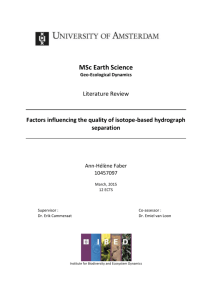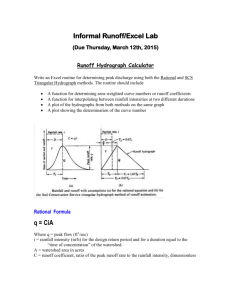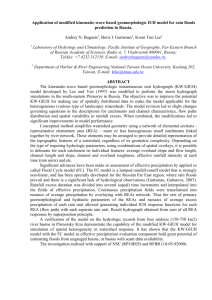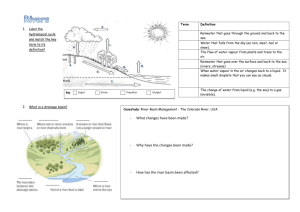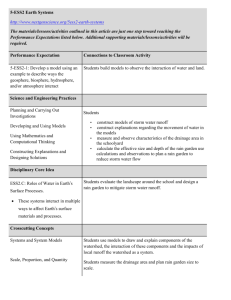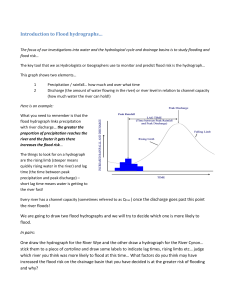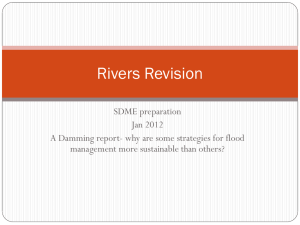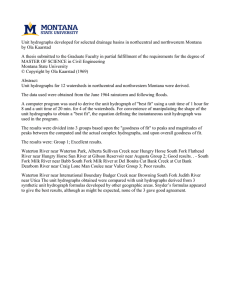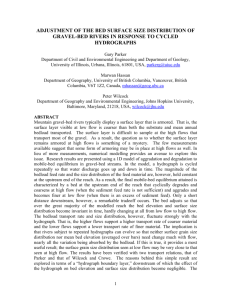Chapter 2 Hydrographs 2
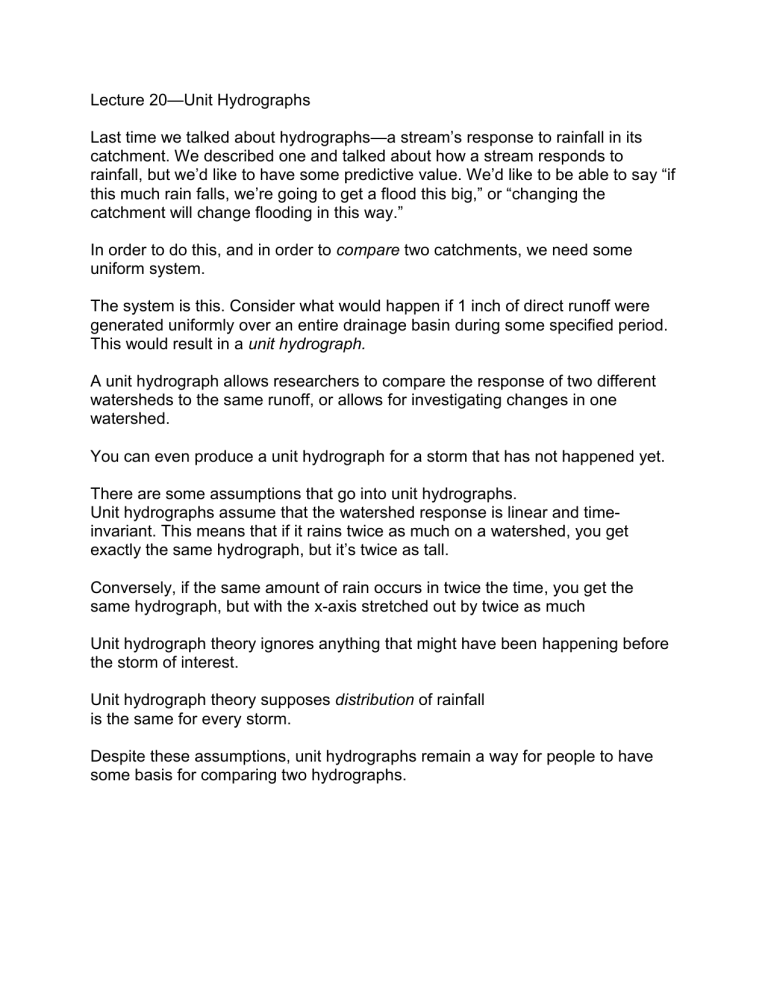
Lecture 20 —Unit Hydrographs
Last time we talked about hydrographs —a stream’s response to rainfall in its catchment. We described one and talked about how a stream responds to rainfall, but we’d like to have some predictive value. We’d like to be able to say “if this much rain falls, we’re going to get a flood this big,” or “changing the catchment will change flooding in this way.”
In order to do this, and in order to compare two catchments, we need some uniform system.
The system is this. Consider what would happen if 1 inch of direct runoff were generated uniformly over an entire drainage basin during some specified period.
This would result in a unit hydrograph.
A unit hydrograph allows researchers to compare the response of two different watersheds to the same runoff, or allows for investigating changes in one watershed.
You can even produce a unit hydrograph for a storm that has not happened yet.
There are some assumptions that go into unit hydrographs.
Unit hydrographs assume that the watershed response is linear and timeinvariant. This means that if it rains twice as much on a watershed, you get exactly the same hydrograph, but it’s twice as tall.
Conversely, if the same amount of rain occurs in twice the time, you get the same hydrograph, but with the x-axis stretched out by twice as much
Unit hydrograph theory ignores anything that might have been happening before the storm of interest.
Unit hydrograph theory supposes distribution of rainfall is the same for every storm.
Despite these assumptions, unit hydrographs remain a way for people to have some basis for comparing two hydrographs.
In order to talk about unit hydrographs, we need some more vocabulary.
First, the amount of time between the center of mass of rainfall excess (the point at which half the rain that’s running off has fallen) and the peak of the hydrograph is called the lag time (t p
).
The time from the start of rainfall excess to the peak of the hydrograph is called the time of rise (T
R
).
The time it takes for water to propagate from the most distant point in the watershed to the outlet is called the time of concentration (t c
). This effectively marks the end of direct runoff, so one way to estimate it is to take the difference from the inflection point and the end of rainfall excess. Last, the total duration of the DRO part of the hydrograph is called the time base (T b
).
Notice that we’re starting to include hyetographs on the hydrograph. This is important, because the volume of direct runoff rainfall and the volume of the hydrograph have to be the same. They also help in finding things like lag time.
So let’s try an example, Example 2-3. Suppose we want to convert this hydrograph: to a 2-hour unit hydrograph . This means that 1 inch of direct runoff rain fell over the course of two hours.
Note we assume this rain fell uniformly over the watershed, and also uniformly in time —we’ll see later how to handle more natural rainfall patterns.
According to the hydrograph base flow is 100 cfs and is constant during the storm.
First, take the hyetograph for this storm over our watershed:
We need to separate out the amount of rain that infiltrated vs. that which ran off. We could go through the the Horton equation, but the Φ index for this storm is given , and it’s 0.5 in/hr.
With that 0.5 inches/hour subtracted, the rain involved in runoff is:
Two inches of excess rain in two hours, and it fell at a constant rate (note that what’s important to us is that the excess rain fell at a constant rate).
Next, we have to remove baseflow from the hydrograph. Because we’ve been told that baseflow is a constant 100 cfs, just subtract 100 cfs from every measurement, and you have the Direct Runoff (DRO) hydrograph.
At the moment we have a hydrograph representing two inches of excess rain in two hours. We wanted ONE inch of rain in two hours. Well, unit hydrograph theory makes this easy for us —just divide all our numbers in half, and we’ll end up with what results when one inch falls in two hours instead of two.
Notice we also attached the direct runoff portion of the hyetograph to the upper corner so that we can visualize both together: That’s how to make a unit hydrograph.
Next time we’ll talk about how to make unit hydrographs of any duration, and how to handle rainfall that’s not uniform.

